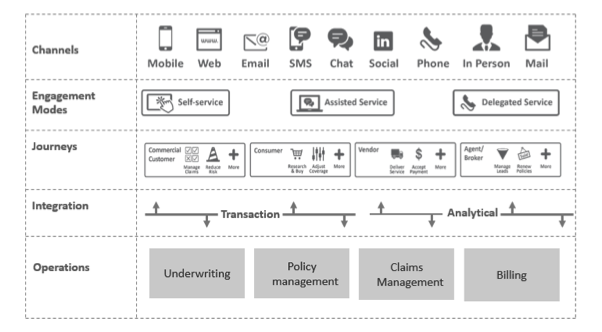Defining the Engagement Era System
Defining the Engagement Era System

In a previous blog post (see The Engagement Era), I provided Guidewire’s perspective that we are at the beginning phase of a new era of P&C systems—the engagement era.
The guiding principle for engagement era systems is to enable the insurer to meet users on their own terms, to provide the experiences and journeys that they want. Rather than equating ”users” solely with customers, as most commentators do, we at Guidewire define “users” to be customers, agents, and insurance knowledge workers. In this post, I’ll explore the attributes of engagement era systems in more detail.
Users have many expectations. When viewed under the lens of engagement, a number of these expectations rise to the top:
Personalized products and journeys
Intuitive, mobile experience
Real-time response
Fast settlement of claims
We recently interviewed a group of millennials and asked them about their expectations when engaging with their insurers. You can see their feedback by watching this short video.
Given these requirements, what do engagement era systems need to do? What is the bar?
Unified core, data, and digital: The system must support core operations, data and analytics, and digital engagement in a cohesive, orchestrated manner.
Omnichannel design: All users must have a consistent and efficient journey across a variety of channels and across the entire insurance lifecycle.
Consumer-grade UX: Users must have an interactive and rewarding experience on all devices and platforms.
Predictive, guided process: Systems must apply data, machine learning, and context to guide processes and decision-making.
API-driven design: Systems must be interoperable with other components and systems.
Another way to define an engagement era system is to consider its high-level architecture. We view it like this:

Engagement System Architecture
When we at Guidewire think about designing for user engagement, it starts with user journeys. These journeys represent user-specific objectives such as:
Consumers researching and buying insurance or making adjustments to their coverage over time
Commercial customers managing their claims or reducing their risk
Agents or brokers managing leads or processing renewals
Vendors wanting to deliver services and get paid for them
These journeys require seamless integration between Digital Experience solutions and Operational Systems of record. Digital Experience solutions need to support a variety of channels and engagement modes for each journey. There are three “engagement modes”: self-service, assisted service with the help of a call center or agent/broker, or a service completely delegated to an agent or broker. Operational Systems must support the journeys for both transactional and analytical purposes—in fact, all of the permutations of channels, engagement modes, journeys, and integrations with operational systems that make up the total engagement experience that we aspire to support.
To learn more about the engagement era—and why insurers should care—watch this short video featuring Guidewire’s CEO, Marcus Ryu.
Tags
Most Popular